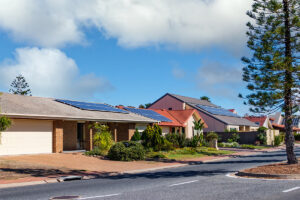Western Power’s chief executive Paul Italiano said that with the rapid increases in solar PV in the state, people without the systems are now disproportionately paying to maintain the WA power grid.
Houses with solar panels draw less electricity from the grid, meaning that they have lower electricity bills despite requiring the same level of service as the rest of the state. The conclusion is that the imbalance would have to be met by charging consumers without solar panels more. Rod Sims, the chairman of Australian’s consumer watchdog the ACCC similarly expressed that it is (solar) “subsidies people are paying for in their electricity prices.”
This is in light of the 2011 comment by WA’s chief economic advisor, that solar panel subsidies are driving up power prices and being “middle class welfare at its worst.” In 2011 Australia led the OECD in the level of customers installing rooftop solar pv systems. A recent report by the Solar Council of Australia ranked every electorate in Australia, potentially destroying this myth of middle class welfare. The mortgage belt and marginal seats were found to have the highest penetration of solar, whilst electorates with greater number of Greens voters had less solar panels installed than anywhere else in the country. John Grimes, Chief Executive of the Australian Solar Council concluded “the more you earn the less likely you are to install solar.”
Many of the incentives available have been scrapped or rolled back after 2011, and from July 1st 2013 cash rebates for solar panels will be slashed in half. The Sustainable Energy Association responded to Western power by commenting that over time the increased usage of solar panels will decrease the reliance on fossil fuels in Australia.










